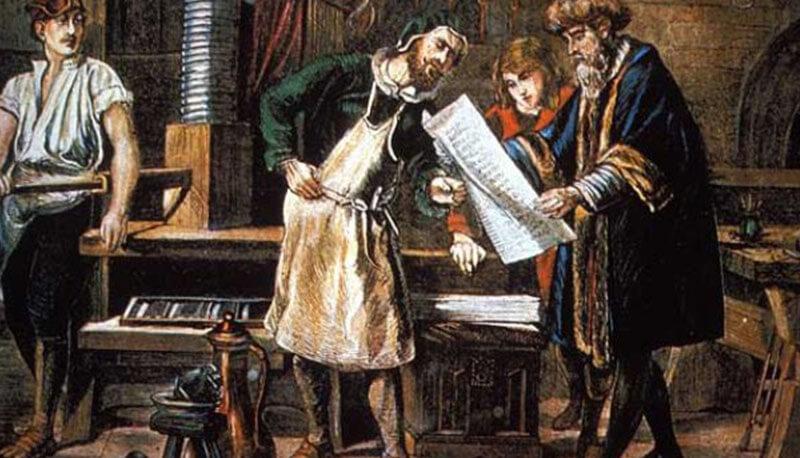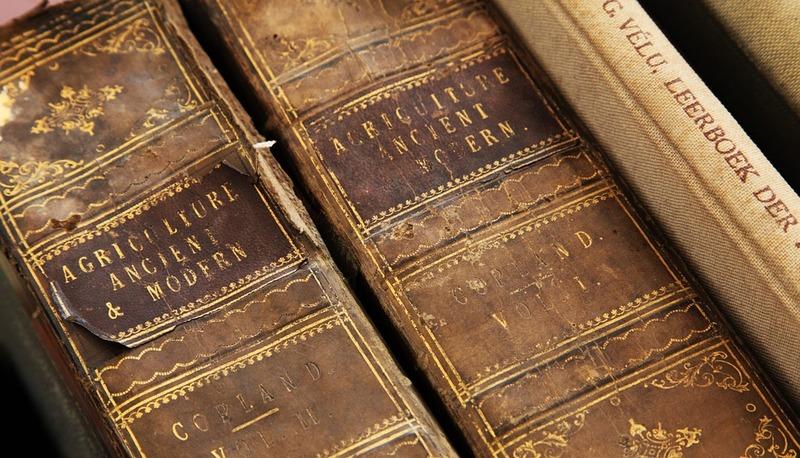Concetti Chiave
- Johann Gutenberg, born in Mainz, is renowned for revolutionizing the printing process with movable type, enhancing existing block printing techniques.
- Gutenberg's innovations included a specific metal alloy, oil-based inks, and a new printing method inspired by wine production techniques.
- In 1450, Gutenberg formed a partnership with banker Johann Fust and engraver Peter Schöffer to print the "42-line Bible," which gained widespread acclaim for its quality.
- Following a legal dispute with Fust over funding, Gutenberg lost his printing equipment, which Fust and Schöffer used for further publications.
- Despite later challenges, Gutenberg's legacy endured, and his students helped spread his printing innovations across Europe, earning him the title "Man of the Millennium" in 1998.
Indice
Gutenberg's early life and career
Johann Gutenberg (Johann Gänsfleisch zur Laden zum Gutenberg) (1390 about – Mainz, 3 February 1468) was an inventor, printer and goldsmith German that acquired its reputation thanks to the enhancement brought to the technology of the printing, among which a metallic league specific, inks to base of oil and, above all, a new type of printing that used the crowds used in the wine production. Traditionally, it is credited like the inventor of the printing to movable type, an enhancement of the printing to blocks already in use in Europe. Johann Gutenberg was born at Mainz, that at present accommodates a museum in its honor, from the merchant Friele (Friedrich) Gänsfleisch zur Laden and from Hilts Wyrich. The name "zum Gutenberg" drift from the building "Hof zum Gutenberg" (today in Christophstrasse, in which the family is transferred. The Gänsfleisch were an of the families Patricks of the town, devoted to the metalworking and to the coinage. Around 1430 Gutenberg it is transferred, for political motive, to Strasbourg where lavorò like novice goldsmith and, particularly, it is occupied some coinage of the coins.

The invention of the printing press
Around 1444 Johann Gutenberg it returned to Mainz, where in 1450 constituted a Societas with the banker Johann Fust, that contributed with 2000 Gulden, and the engraver Peter Schöffer (or Schäffer), to the purpose of to print the so-called one "Bible to 42 lines" on the base of the Vulgate. The work venne concluded February 23 1455 I press it "Hof zum Humbrecht" (today in Schustergasse, 18) and the book put in sale to Frankfurt. The edition provoked immediate enthusiasm for the typographical quality.
Immediately, after the publication the banker Fust asked for the return, with interest, of its contribution, causing a trial for insolvency against Gutenberg and the passage of the property of equipment and machinery to the same banker. Fust used them, together with Schöffer, to print in 1457 an edition of the Book of the Psalms. This presents new types in two heights and the printing bicroma of the capilettera.

Gutenberg's later years and legacy
In 1458 Johann Gutenberg it is associated to Konrad Humery, I criticize of Mainz, and public, done not sign, it "Bible to 36 lines" and other religious volumes of subject. In 1462 the bag of Mainz aside of Adolfo TWO of Nassau compels Gutenberg to leave the town. It will return in 1465, invited from the same Adolfo TWO that the appointment limb of the court, accordandogli you benefit and esentandolo from the taxes. In the same year the archbishop of Mainz guaranteed him a life annuity in recognition of its merits.
In 1468 Johann Gutenberg it dies leaving its precious material to Humery. Later on to the bag of Mainz the students of Gutenberg and of Schöffer disperse themselves for the Europe, contributing so to the spread of the new system of printing.
In 1998 an American jury of journalists elected Gutenberg "Man of the Millennium", more important person of the second millennium.
Domande da interrogazione
- Chi era Johann Gutenberg e quale fu il suo contributo principale?
- Quale fu il ruolo di Johann Fust nella carriera di Gutenberg?
- Cosa accadde a Gutenberg dopo la pubblicazione della Bibbia a 42 linee?
- Qual è stato il riconoscimento postumo ricevuto da Gutenberg nel 1998?
Johann Gutenberg era un inventore, stampatore e orafo tedesco noto per aver migliorato la tecnologia della stampa, in particolare con l'invenzione della stampa a caratteri mobili.
Johann Fust fu un banchiere che contribuì con 2000 Gulden alla creazione della "Bibbia a 42 linee", ma successivamente intentò una causa per insolvenza contro Gutenberg, acquisendo le sue attrezzature.
Dopo la pubblicazione, Gutenberg affrontò una causa per insolvenza e perse le sue attrezzature. Successivamente si associò a Konrad Humery e pubblicò altre opere religiose.
Nel 1998, una giuria americana di giornalisti ha eletto Gutenberg "Uomo del Millennio", riconoscendolo come la persona più importante del secondo millennio.






 Accedi a tutti gli appunti
Accedi a tutti gli appunti
 Tutor AI: studia meglio e in meno tempo
Tutor AI: studia meglio e in meno tempo